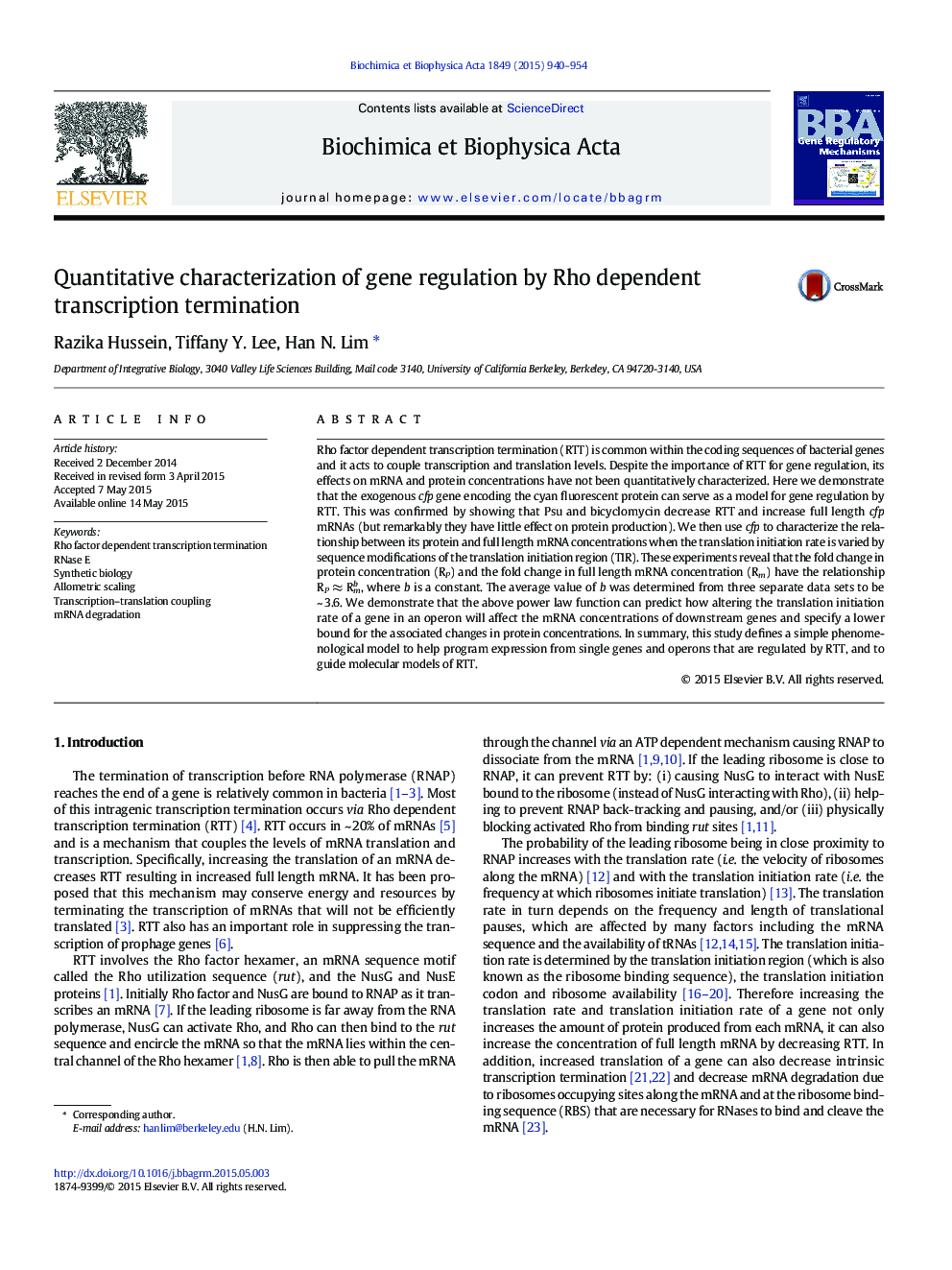| Article ID | Journal | Published Year | Pages | File Type |
|---|---|---|---|---|
| 10799017 | Biochimica et Biophysica Acta (BBA) - Gene Regulatory Mechanisms | 2015 | 15 Pages |
Abstract
Rho factor dependent transcription termination (RTT) is common within the coding sequences of bacterial genes and it acts to couple transcription and translation levels. Despite the importance of RTT for gene regulation, its effects on mRNA and protein concentrations have not been quantitatively characterized. Here we demonstrate that the exogenous cfp gene encoding the cyan fluorescent protein can serve as a model for gene regulation by RTT. This was confirmed by showing that Psu and bicyclomycin decrease RTT and increase full length cfp mRNAs (but remarkably they have little effect on protein production). We then use cfp to characterize the relationship between its protein and full length mRNA concentrations when the translation initiation rate is varied by sequence modifications of the translation initiation region (TIR). These experiments reveal that the fold change in protein concentration (RP) and the fold change in full length mRNA concentration (Rm) have the relationship RP â Rmb, where b is a constant. The average value of b was determined from three separate data sets to be ~ 3.6. We demonstrate that the above power law function can predict how altering the translation initiation rate of a gene in an operon will affect the mRNA concentrations of downstream genes and specify a lower bound for the associated changes in protein concentrations. In summary, this study defines a simple phenomenological model to help program expression from single genes and operons that are regulated by RTT, and to guide molecular models of RTT.
Related Topics
Life Sciences
Biochemistry, Genetics and Molecular Biology
Biochemistry
Authors
Razika Hussein, Tiffany Y. Lee, Han N. Lim,
